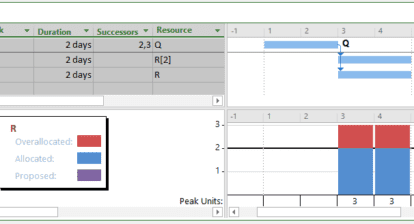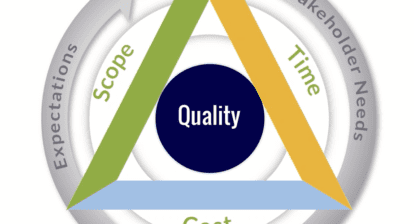 Most projects bring with them some conflict. Project managers have the dual responsibility of managing, not only the workflow of the project, but also the inevitable conflict that arises within the daily activities of the job. These conflicts, known as blameless or fracturing, can either benefit or harm the successful completion of a project.
Most projects bring with them some conflict. Project managers have the dual responsibility of managing, not only the workflow of the project, but also the inevitable conflict that arises within the daily activities of the job. These conflicts, known as blameless or fracturing, can either benefit or harm the successful completion of a project.
Blameless conflict helps to strengthen the project. Blameless conflict does not judge situations or people as good or bad, or wrong or right. This type of conflict allows individuals to assess the situation from varying points of view, and also allows employees to have a voice. Blameless conflict encourages the building of a resilient foundation. With this foundation, team members are better able to focus on the work and achieve improved time management.
Fracturing conflict is the type that hinders your project. This type of conflict causes individuals to lose sight of the work and focus on blame. A recent article by the Association for Project Management identified some fracturing conflicts that can create difficulties within the workplace. These include disagreements over tasks, conflicting values, unspoken assumptions, emotions, miscommunications, ego, and uncertainty. For instance, a team member who criticizes others spends more time focused on the perceived problems than on the work. Individuals may also complain about the workload. As a result, the job simply will not be finished on time.
Internal conflicts may also occur. A project manager with internal blameless conflict within his/her team may use this struggle to help solve problems or reassess situations. Fracturing internal conflict may leave the PM or other team members feeling dissatisfied or hesitant in a way that impacts job performance.
Regardless of the type of conflict that you are dealing with as a project manager, a conflict management process gives you a set plan for how to deal with the conflict. Not unlike a project management plan, having a policy or process in place for conflict helps create a series of actions that will lead you beyond the conflict to efficiently and effectively reaching your end goals.
Five Tips for Dealing with Conflict in Project Management
- Identify the event or situation that generated the blameless or fracturing conflict. If the event or situation involves blameless conflict, acknowledge the strengthening behavior of the conflict. This acknowledgment could include an email to commend the participants for resolving the situation or it could be having a mini-celebration to thank everyone for their efforts in solving a particular issue. If the conflict is fracturing, divert the team’s focus back to finding a solution, so that interruption to the work is limited.
- Establish the need for blameless conflict within the team. Meet with the project team and set a conflict protocol for the job. A protocol like this establishes that team members should focus on facts and solutions, rather than judging behaviors or situations as good or bad or defining events as wrong or right. When fracturing conflict occurs, the project manager can remind team members of the protocol. With this type of conflict protocol in place, statements like, “She is wrong” are reworded to “That work needs to be revised.” Subtle shifts in wording can change the course events and solutions are more easily found.
- Have an awareness of fear motivators. Margaret Paul, in her recent Huffpost article, suggested that the less fear involved in a situation, the fewer times the stress response of fight or flight is triggered. Reducing triggering reactivity allows team members to remain open to differing views and solutions. A strong fracturing reaction from an individual may be an indicator that the employee is feeling fear. Some common fear motivators include fear of failure, fear of being fired, or even fear of losing value as a person. Reducing fear increases engagement, expands creativity, and improves communication.
- Maintain and enforce your conflict process throughout the project. The consistency of your conflict management process increases the authenticity and accountability of your actions. Encourage blameless conflict. Respond to fracturing conflict. Be consistent. As a project manager, you will lose credibility with your team if you do not hold all people and events to the same standard. A fracturing conflict is also much easier to remedy when handled quickly and efficiently.
- Keep focused on the Project Goals. Emotions can often drive us toward conflicts that look at only one side of a situation. With blameless conflict, emotions are acknowledged, but do not become the focus of the conflict. With fracturing conflict, emotions become the focus and it’s hard not to let those emotions take over. As a project manager, remind team members to keep their focus on each milestone along the path to the end goal. Have small celebrations for activities that strengthen the team and redirect fracturing conflicts back to the Project Goals and objectives.
Follow these five tips for putting a conflict management plan in place. Conflicts are inevitable, but project management and conflict CAN work together to create enduring results.
For more insight, check out Lynette’s on-demand webinar: What Type of Conflict Do You Have in Your Workplace?







